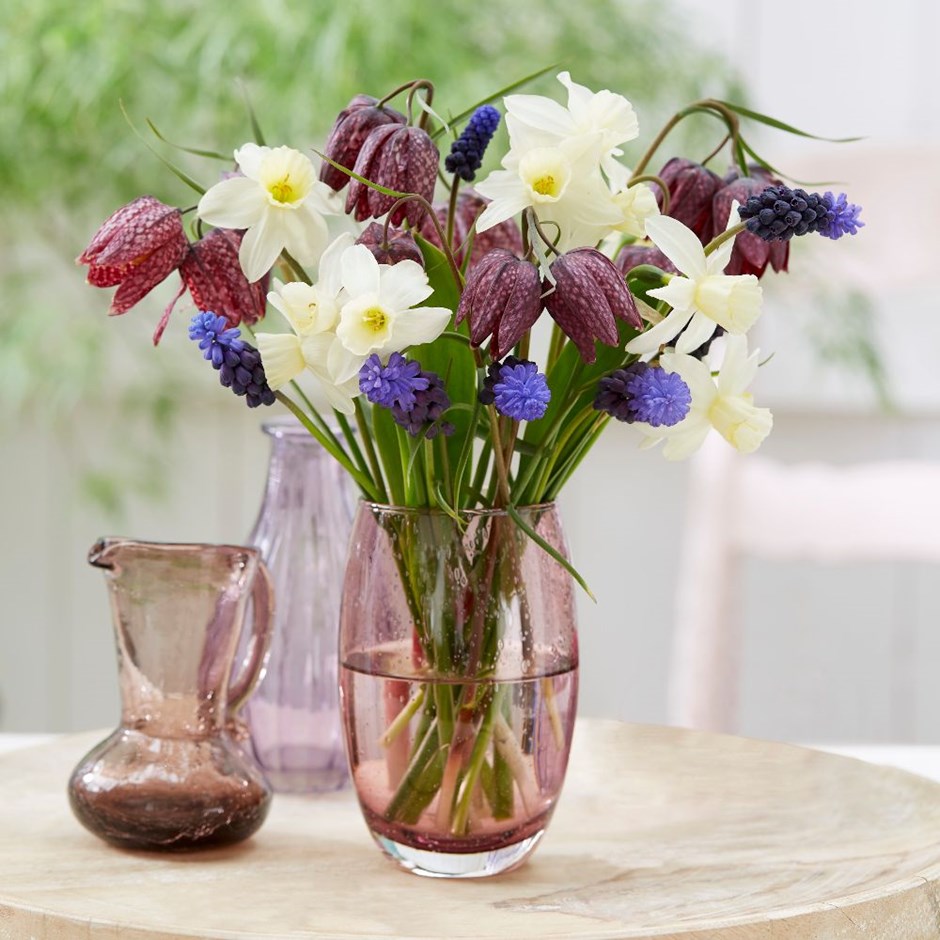Spring posie bulb collection
bulb collection
- Position: Full sun
- Soil: Moderately fertile, moist, well-drained soil
- Rate of growth: Average
- Flowering period: April to May
- Hardiness: Fully hardy
A quirky and dramatic collection of plants perfect for naturalising that plays on colour, form and texture. From the purple headed snakes-head fritillary, the tonal blues and purples of the grape hyacinth, to the multi-headed purity of the nodding narcissus, this combination is a real spring time showstopper.
In each collection you will receive the following:
- 10 × Fritillaria meleagris: Pretty, pendent, white and pinkish-purple bells with distinctive checkerboard markings on slender stems in April and May. These delightful snake's head fritillaries are perfect for naturalising in a moist woodland edge or wildflower garden. It's essential to select a site where the soil remains moist in summer. Grows to 30cm.
- 25 × Muscari latifolium: This is such a great little plant that in summer 2005 it was voted as the International Flower Bulb Centre's official bulb of the year. The bottom two-thirds of the flowers are coloured a very dark blue and appear near black in certain lights. Each spike is topped by a tuft of striking bright blue flowers giving it a two-tone effect. Its leaves are broader and flatter than most other grape hyacinths and they tend to wrap themselves around the stem of each flower rather than just jut up. It is a small plant that packs a big punch when planted in big, naturalistic drifts. Mix it with other spring flowers in an orchard or meadow - try planting it with the hoop petticoat daffodil for great colour contrast. Alternatively cram loads into a pot and place it on a sunny patio. Grows to 15cm.
- 10 × Narcissus 'Thalia': A multi-headed trumpet daffodil that emerges from its bud a greeny-white and opens to reveal a delightful, pure white flower that looks really good planted in big swathes. This is quite an old variety that was a firm favourite of the Victorians. It went out of favour for several years as the newer varieties had bigger flowers or bolder colours. Happily though, this gem is now enjoying a renaissance due to its simple, understated elegance. Grows to 40cm.
- Harmful if eaten/may cause skin allergy

